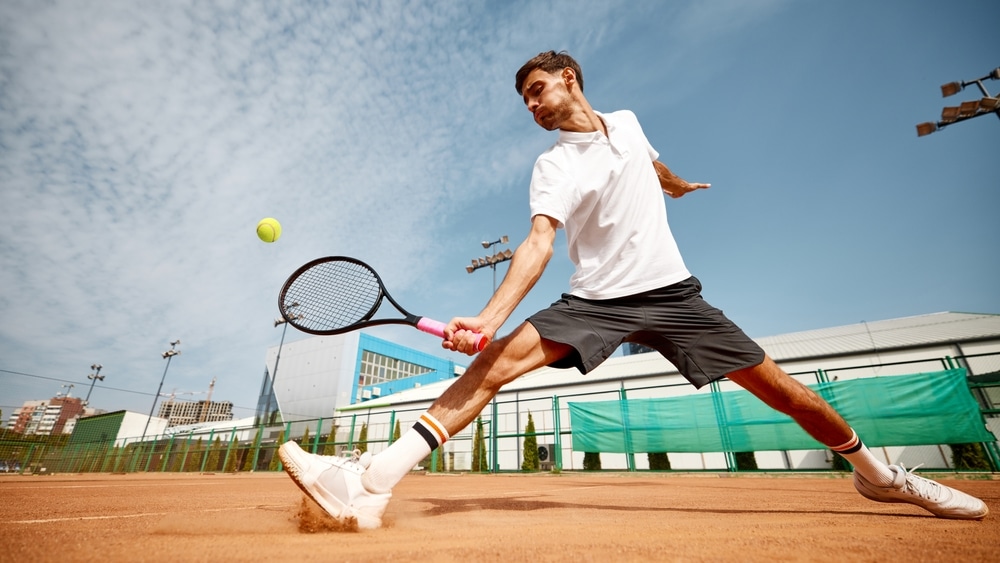Table of Contents
Picture yourself winning against the opponent and rocking the match with one last mind-blowing shot. I mean, what a great day it would be if everything fell in your favor during the game: no opponent’s pressure, complete control over your grips and shots, yet one fault turned the tide, i.e., unforced errors. You might be hearing this term for the first time, but it is something that can truly make you lose the game. So, in this article guide, we will discuss the errors that tennis players make without any pressure. Despite being in a good position, with total control and grip, when a player misses the shot, it falls in the category of an unforced error. Let’s discuss how to avoid unforced errors in tennis in detail.
Understanding Unforced Tennis Error

Folks, if you want to ace your game and have a full grip on the essential guide to tennis yet don’t know what an unforced error in tennis is, you are missing out on something.
When a tennis player mishits or misjudges a relatively easy shot, it is an unforced error in the game of tennis because the player did not use their opponent’s talent or pressure to cause the error.
Since these errors are regarded as avoidable and have the potential to have a substantial impact on the results of tennis matches, they can be especially annoying.
Here are some of the factors that lead to unforced errors in tennis.
- Inattention: Losing focus, leading to missed shots.
- Unsteady Footwork: Poor movement reduces shot accuracy.
- Bad Shot Selection: Choosing risky shots over safer ones.
- Overestimating Difficulty: Attempting challenging shots when simpler ones suffice.
- Frequent Errors: Often seen in serves, volleys, high balls, and groundstrokes.
Forced vs. Unforced Error in Tennis

In tennis, there are two types of errors: forced and unforced. As we have discussed the concept of the unforced ones, let’s see what the main difference is between the two.
- Forced Errors: Caused by the opponent’s strong shot, like a powerful serve, deep groundstroke, or well-placed volley, putting you under pressure.
- Unforced Errors: Result from self-mistakes—bad technique, lost focus, or poor decision-making—when not pressured by the opponent.
- Competitive Play: Forced errors are natural due to opponent pressure, like a tough serve causing a mishit.
- Taking Responsibility: Unforced errors are fully under your control, like missing an easy shot in a favorable position.
Because your opponent can put you under stress, forced errors are an unavoidable feature of competitive play. A strong serve that slides off the line, for instance, could result in a mishit or a weak return, both of which are considered forced errors. On the other side, an unforced error is more about taking responsibility for your actions; it’s the backhand you hit into the net even if you were in the ideal position or the overhead smash you miss even though you had plenty of time to practice.
If you want to know more about forced errors in tennis, check out this article.
Tips to Prevent Unforced Error in Tennis
There are a few tactics you can use to reduce unforced errors in tennis games and improve your performance. Here are five crucial tips that will help you cut down on these errors and enhance your overall on-court performance.
Remain Vigilant

One of the main causes of players’ unforced errors is not being in the best position to hit the ball. To avoid this, stay on the balls of your feet and move constantly. By remaining active and agile, you can rapidly correct your positioning and take the proper stance to perform your shots.
- Footwork Drills: Include drills in your practice routine that focus on your feet. Your agility will improve from these activities, and you’ll be able to move swiftly to any area of the court. For better footwork, try ladder workouts, cone drills, and shadow tennis.
- Anticipation: Practice predicting your opponent’s shots. You may improve your positioning and gain a head start on your movement by projecting where the ball will likely travel. Important hints can be found by observing your opponent’s body language and learning about their playing style.
Take a Low and Wide Position
In tennis, positioning is everything. You can generate power in your shots and keep your balance by getting wide and low. Additionally, you can respond to incoming balls more quickly in this position, lowering the possibility of mishits.
- Bend Your Knees: Concentrate on lowering your center of gravity and bending your knees. You’ll be more stable and grounded as a result. Your balance and power will enhance with a lower stance, particularly while making fast lateral movements.
- Wide Stance: Maintain a broad stance to increase your ground coverage and balance. You could reach for broad images with this alignment and maintain stability. Improved balance and more forceful actions are made possible by a wider base of support.
Get Ready Early

Getting ready is essential to prepare yourself for a better shot. You give yourself more time to position and plan your shot properly. This lessens the possibility of hurried or badly performed strokes, frequently leading to unforced errors.
- Racket Back Early: Begin your backswing as soon as you see where the ball is going. You’ll be ready to take a steady, accurate shot if you prepare ahead of time. Being prepared ahead of time will help you feel less rushed and execute shots more skillfully.
- Pay Attention to Timing: Practice timing your shots to hit the ball at the best moment in your swing. For shots to be forceful and consistent, timing is essential. You can refine this ability by practicing with a practice partner or a ball machine drill.
Master Topspin Shots
You can avoid unforced errors in tennis by mastering the topspin. This strategy has the potential to decrease drastically unforced errors. Topspin hitting lowers the chance of hitting long or wide and helps keep the ball in play. Topspin shots are more dependable and potent because they dip into the court after they cross the net.
- Brush Up: To produce topspin, concentrate on brushing up against the ball with your racket. By using this method, the ball is able to rotate forward and dip into the court. You can hit aggressive shots that remain inside the lines of the court by using this approach.
- Practice with Intention: Include targeted drills for topspin in your practice sessions. You will improve your topspin shot consistency and dependability with these drills. It can also be helpful to work on improving your technique with a tennis coach.
Play Cautious Cross-Court Shots

In general, cross-court shots are more successful and safer than down-the-line ones. They provide you with better control over the rally and a greater margin of error.
You can lower your chances of making an unforced error in tennis and still be in control of the game if you play 90% of your strokes cross-court.
- Aim for Angles: Make an effort to hit cross-court shots from a favorable angle. This tactic forces your opponent to cover additional ground, which puts pressure on them in addition to keeping the ball in play. You can take advantage of opportunities created by your opponent being forced off the court by sharp angles.
- Consistency Over Power: When making cross-court shots, put consistency before power. Winning rallies requires more strategic placement and depth than brute force. Applying pressure to your opponent can be achieved by limiting your blunders and maintaining possession of the ball.
Useful Exercises to Avoid Unforced Error
Learning about the following exercises will assist you in using these tips successfully:
1. Footwork Drill: Arrange cones all over the court. Practice sprinting to each one and assuming the proper stance. You’ll improve your positioning and agility with this exercise.
2. Topspin Drill: Practicing hitting topspin strokes with a practicing partner or a ball machine. Concentrate on the uniformity and brushing motion. Hitting against a wall can also help develop a solid topspin stroke.
3. Cross-Court Drill: Get comfortable hitting cross-court shots from various court positions. Strive for angled, deep strikes that force your opponent to defend. Mini-tennis on a cross-court can help you become more consistent and have better angles.
Mental Focus is Necessary

It takes mental discipline and effort in addition to physical ability to reduce unforced errors. The following mental techniques will help you maintain focus and reduce errors:
- Remain Calm: Throughout games, have a composed and concentrated attitude. Unforced errors should not be a source of frustration; instead, go on to the next topic. It is possible to stop a single mistake from becoming a series of errors by controlling your emotions.
- Positive Self-Talk: Maintain your attention and increase your confidence by using positive self-talk. Remind yourself of your strengths and give yourself encouragement. “Stay focused” and “I can do this” are examples of phrases that can support an optimistic outlook.
- Schedule: Create a pre-shot ritual to keep yourself organized and focused. This practice can involve breathing deeply, positioning yourself correctly, and visualizing the shot. You can stay focused and feel less anxious with the support of a regular routine.
Conclusion
Summing up, the article covered details on what are unforced errors in tennis and how to avoid them. You can reduce the chances of missing a shot and train yourself to be more active and vigilant on the court. So, follow our article guide and become a pro.
Master the Game!


